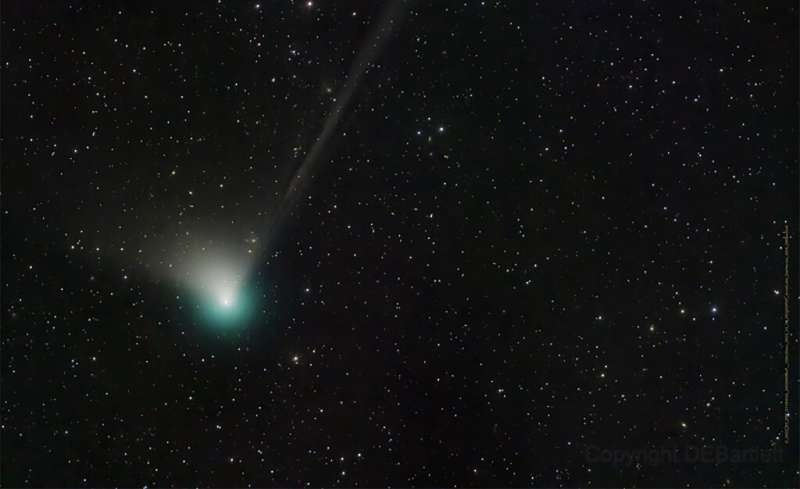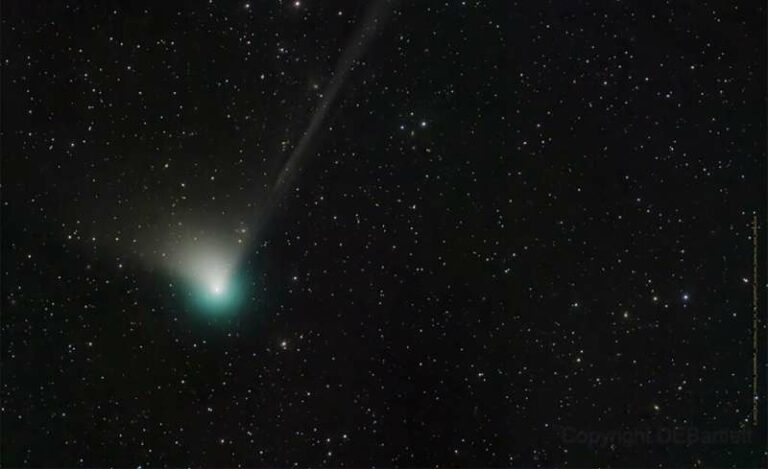Once in 50,000-year comet may be visible to the naked eye
Astronomers have warned that a recently found comet might be seen with the naked eye when it flies by Earth and the Sun in the upcoming weeks for the first time in 50,000 years.
The Zwicky Transient Facility, which saw the comet past Jupiter for the first time in March of last year, gave it the name C/2022 E3 (ZTF).
It will pass closest to Earth on February 1 and come closest to the Sun on January 12 after leaving the coldest parts of our Solar System.
If the sky is not too lit by city lights or the Moon, it will be simple to detect with a decent pair of binoculars and maybe even with the unaided eye.

According to Thomas Prince, a physics professor at the California Institute of Technology who works at the Zwicky Transient Facility, the comet “will be brightest when it is closest to the Earth.”
The comet, which is believed to be made of ice and dust and has a greenish halo, is thought to have a diameter of around a kilometer, according to astronomer Nicolas Biver of the Paris Observatory.
That makes it considerably smaller than Hale-Bopp, which flew by in 1997 with a potentially fatal diameter of around 60 kilometers, and NEOWISE, the last comet visible to the human eye, which passed Earth in March 2020.
However, the most recent trip will be closer to Earth, which “may make up for the fact that it is not very huge,” according to Biver.
A fuller moon may make it challenging to see the comet, even though it will be at its brightest when it passes Earth in the first part of February.
Biver proposed the last week of January for the Northern Hemisphere, when the comet passes over the Ursa Minor and Ursa Major constellations.
He claimed that stargazers have a fantastic opportunity with the new moon that occurs throughout the weekend of January 21–22.
The item “might possibly get a delightful surprise and be twice as brilliant as predicted,” said Biver.
On February 10, when it will pass quite near to Mars, there will be a second opportunity, according to Prince, to find the comet in the sky.
‘Rare visitor’
According to Prince, the comet has spent the majority of its life “at least 2,500 times farther away from the Sun than the Earth is.”
According to Biver, the comet is thought to have originated from the Oort Cloud, a large hypothetical sphere thought to envelop the Solar System and contain unidentified frozen particles.
When Neanderthals still inhabited the planet, the comet last crossed Earth in the Upper Paleolithic era.
The comet will likely return to the inner Solar System in 50,000 years, according to Prince.
However, according to Biver, it’s possible that the comet will be “permanently expelled from the Solar System” following this encounter.
The James Webb Space Telescope will be one of those paying careful attention. But instead of taking pictures, it will instead analyze the make-up of the comet, according to Biver.
Telescopes can more easily determine a comet’s makeup the closer it comes to Earth because “the Sun melts off its outer layers,” according to Prince.
He continued, saying that this “unique visitor” will provide “us with knowledge on the inhabitants of our Solar system much beyond the most distant worlds.”
Source:PhysOrg
Do not forget to share your opinion with us to provide you with the best posts !




0 Comments